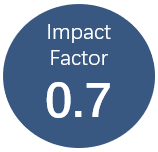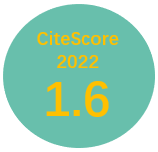The economics of infrastructure in a globalized world: Issues, lessons and future challenges
Vol 1, Issue 2, 2017
VIEWS - 2570 (Abstract) 1266 (PDF)
Abstract
Although infrastructure is widely recognized as a key ingredient in a country’s economic success, many issues surrounding infrastructurespending are not well understood. This paper explores six themes: the returns to infrastructure; the role of the private sector; the evaluation and delivery of infrastructure in practice; the nature of network industries, pricing and regulation; political economy considerations of infrastructure provision; and infrastructure in developing countries. This paper aims to provide insights into many of these questions, drawing on the existing literature.
Keywords
Full Text:
PDFReferences
Agénor PR (2013). Public Capital, Growth and Welfare: Analytical Foundations for Public Policy. Princeton: Princeton University Press.
Aschauer D (1989). “Is public expenditure productive?”. Journal of Monetary Economics, 23(2): 177–200. doi: 10.1016/0304-3932(89)90047-0.
Sarah B, Bohren JA, McIntosh C, and et al. (2014). “Designing experiments to measure spillover effects”. Policy Research Working Paper No. 6824. Washington, DC, USA: World Bank.
Bramoullé Y, Galeotti A and Rogers BW (eds.) (2016). The Oxford Handbook of the Economics of Networks. New York, NY, USA: Oxford University Press.
Blanc-Brude F (2010). “Risk transfer in long-term public-private contracts”. Conference on the Economics of Infrastructure in a Globalised World: Issues, Lessons and Future Challenges; 2010 March 18–19; Sydney, Australia. https://web.archive.org/web/20110217220419/http://cama.anu.edu.au/Infrastructure_Conference.asp.
Brooks DH (2010). “Asia’s infrastructure and trade”. Conference on the Economics of Infrastructure in a Globalised World: Issues, Lessons and Future Challenges, 2010 March 18–19; Sydney, Australia. https://web.archive.org/web/20110217220419/http://cama.anu.edu.au/Infrastructure_Conference.asp.
Brooks DH and Ferrarini B (2010). “Changing trade costs between people’s republic of China and India”. ADB Economics Working Paper Series No. 203. Manila, Philippines: Asian Development Bank.
Calderón C, Moral-Benito E and Servén L (2015). “Is infrastructure capital productive? A dynamic heterogeneous approach”. Journal of Applied Econometrics, 30(2): 177–198. doi: 10.1002/jae.2373.
Collier P and O’Connell SA (2007). “Opportunities and choices”. In: Ndulu BJ, O’Connell SA, Azam JP, et al. (eds.) The Political Economy of Economic Growth in Africa 1960–2000. Cambridge, UK: Cambridge University Press. doi: 10.1017/CBO9780511492648.003.
Costinot A and Donaldson D (2016). “How large are the gains from economic integration? Theory and evidence from U.S. agriculture, 1880–1997”. NBER Working Paper No. 22946. Cambridge, MA, USA: National Bureau Of Economic Research. doi: 10.3386/w22946.
Donaldson D (2014) (Forthcoming). “Railroads of the Raj: Estimating the impact of transportation infrastructure,” American Economic Review. doi: 10.3386/w16487.
______ (2015). “The gains from market integration”. Annual Review of Economics, 7: 619–647. doi: 10.1146/annurev-economics-080213-041015.
Donaldson D and Hornbeck R (2016). “Railroads and American economic growth: A “Market Access” Approach”. The Quarterly Journal of Economics, 131(2): 799–858. doi: 10.1093/qje/qjw002.
Easterly W and Levine R (1998). “Troubles with the neighbours: Africa’s problem, Africa’s opportunity”. Journal of African Economies, 7(1): 120–142. doi: 10.1093/oxfordjournals.jae.a020941.
Engel E, Fischer RD and Galetovic A (2014a). The economics of public-private partnerships: A basic guide. New York, NY, USA: Cambridge University Press. doi: 10.1017/CBO9781139565615.
______ (2014b). “Finance and public-private partnerships”. In: Heath A and Read M (eds.). Financial flows and infrastructure financing, p. 193–222. Sydney, Australia: Reserve Bank of Australia.
Ergas Henry and Robson ARW (2009). “The social losses from inefficient infrastructure projects: Recent Australian experience”. Conference on the Economics of Infrastructure in a Globalised World: Issues, Lessons and Future Challenges, 2010 March 18–19; Sydney, Australia. https://web.archive.org/web/20110217220419/http://cama.anu.edu.au/Infrastructure_Conference.asp.
Fischer R (2010). “PPP: Conceptual issues and pitfalls”. Conference on the Economics of Infrastructure in a Globalised World: Issues, Lessons and Future Challenges, 2010 March 18–19; Sydney, Australia. https://web.archive.org/web/20110217220419/http://cama.anu.edu.au/Infrastructure_Conference.asp.
Forsyth P (2010). “Evaluating Investments—CGE or CBA?” Conference on the Economics of Infrastructure in a Globalised World: Issues, Lessons and Future Challenges, 2010 March 18–19; Sydney, Australia. https://web.archive.org/web/20110217220419/http://cama.anu.edu.au/Infrastructure_Conference.asp.
Ghosh A and Meagher K (2008). “Political economy of infrastructure investment: A spatial approach”. Sydney, Australia: University of New South Wales. doi: 10.2139/ssrn.694243.
Gunatilake H (2010). “Lessons from private sector participation in water and energy sectors in developing countries”. Conference on the Economics of Infrastructure in a Globalised World: Issues, Lessons and Future Challenges, 2010 March 18–19; Sydney, Australia. https://web.archive.org/web/20110217220419/http://cama.anu.edu.au/Infrastructure_Conference.asp.
Hoppe EI and Schmitz PW (2013). “Public-private partnerships versus traditional procurement: Innovation incentives and information gathering”. The RAND Journal of Economics, 44(1): 56–74. doi: 10.1111/1756-2171.12010.
Howell B (2010). “Regulation and investment in technologically dynamic infrastructures: Insights from telecommunications”. Conference on the Economics of Infrastructure in a Globalised World: Issues, Lessons and Future Challenges, 2010 March 18–19; Sydney, Australia. https://web.archive.org/web/20110217220419/http://cama.anu.edu.au/Infrastructure_Conference.asp.
Hummels D (2001). “Time as a trade barrier”. GTAP Working Paper No. 18. West Lafayette, IN, USA: Purdue University.
Jones CI and Romer PM (2010). “The New Kaldor facts: Ideas, institutions, population, and human capital”. American Economic Journal: Macroeconomics, 2(1): 224–245. doi: 10.1257/mac.2.1.224.
Kessides I (2010). “Pricing flexibility in restructured network utilities”. Conference on the Economics of Infrastructure in a Globalised World: Issues, Lessons and Future Challenges, 2010 March 18–19; Sydney, Australia. https://web.archive.org/web/20110217220419/http://cama.anu.edu.au/Infrastructure_Conference.asp.
Knight B (2000). “The flypaper effect unstuck: Evidence on endogenous grants from the federal highway aid program”. Finance and Economics Discussion Series. Washington, DC, USA: Divisions of Research & Statistics and Monetary Affairs, Federal Reserve Board.
Lee JW (2010). “Financing infrastructure investment in Asia: Need and the role of development partners”. Conference on the Economics of Infrastructure in a Globalised World: Issues, Lessons and Future Challenges, 2010 March 18–19; Sydney, Australia. https://web.archive.org/web/20110217220419/http://cama.anu.edu.au/Infrastructure_Conference.asp.
Li Z (2010). “Some evidence on the performance of transport infrastructure investment in China”. Conference on the Economics of Infrastructure in a Globalised World: Issues, Lessons and Future Challenges, 2010 March 18–19; Sydney, Australia. https://web.archive.org/web/20110217220419/http://cama.anu.edu.au/Infrastructure_Conference.asp.
Limão N and Venables AJ (2001). “Infrastructure, geographical disadvantage, transport costs, and trade”. The World Bank Economic Review, 15(3): 451–79. doi: 10.1093/wber/15.3.451.
Lyneham S (2010). “Evaluation and delivery of infrastructure in practice—Theory and practice. Conference on the Economics of Infrastructure in a Globalised World: Issues, Lessons and Future Challenges, 2010 March 18–19; Sydney, Australia. https://web.archive.org/web/20110217220419/http://cama.anu.edu.au/Infrastructure_Conference.asp.
Marcelo D, House S, Mandri-Perrott C, et al. (2017). “Do countries learn from experience in infrastructure PPP? PPP practice and contract cancellation”. Policy Research Working Paper No. 8054. Washington, DC, USA: The World Bank.
Menezes F (2010). “Price regulation and infrastructure investment”. Conference on the Economics of Infrastructure in a Globalised World: Issues, Lessons and Future Challenges, 2010 March 18–19; Sydney, Australia. https://web.archive.org/web/20110217220419/http://cama.anu.edu.au/Infrastructure_Conference.asp.
Ng YK (2009). Increasing returns and economic efficiency. New York, NY, USA: Palgrave Macmillan. doi: 10.1057/9780230236813.
______ (2010). “Why should governments encourage improvements in infrastructure”? Conference on the Economics of Infrastructure in a Globalised World: Issues, Lessons and Future Challenges, 2010 March 18–19; Sydney, Australia. https://web.archive.org/web/20110217220419/http://cama.anu.edu.au/Infrastructure_Conference.asp.
Roberts M and Deichmann U (2011). “International growth spillovers, geography and infrastructure”. The World Economy, 34(9): 1507–1533. doi: 10.1111/j.1467-9701.2011.01392.x.
Straub S (2011). “Infrastructure and development: A critical appraisal of the macro-level literature”. The Journal of Development Studies, 47(5): 683–708. doi: 10.1080/00220388.2010.509785.
Von Weizsäcker EU, Young OR and Finger M (eds.) (2005). Limits to privatization: How to avoid too much of a good thing. Sterling, VA, London, UK: Earthscan.
Winston C (2006). Government failure versus market failure: Microeconomics policy research and government performance. Washington, DC, USA: The Brookings Institution.
DOI: https://doi.org/10.24294/jipd.v1i2.55
Refbacks
- There are currently no refbacks.
Copyright (c) 2017 Timo Henckel, Warwick J. McKibbin

This work is licensed under a Creative Commons Attribution-NonCommercial 4.0 International License.

This site is licensed under a Creative Commons Attribution 4.0 International License.










